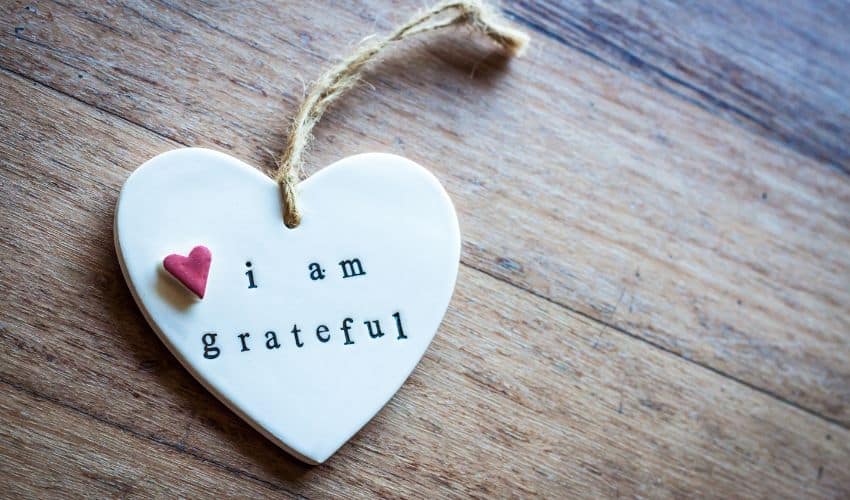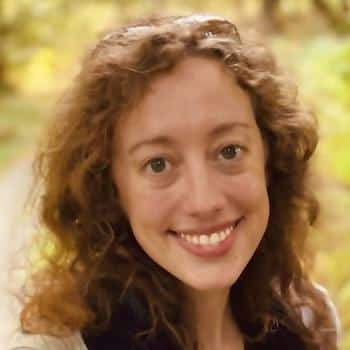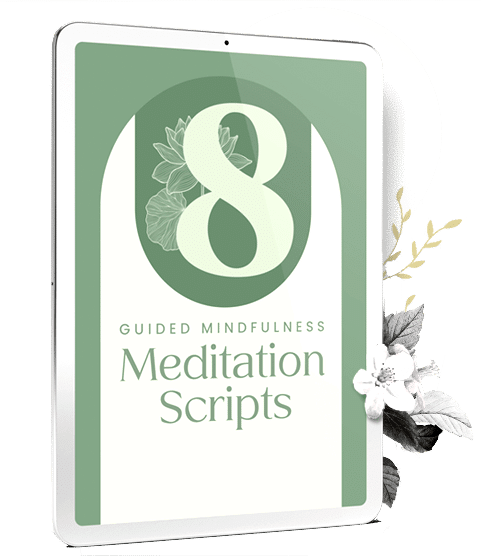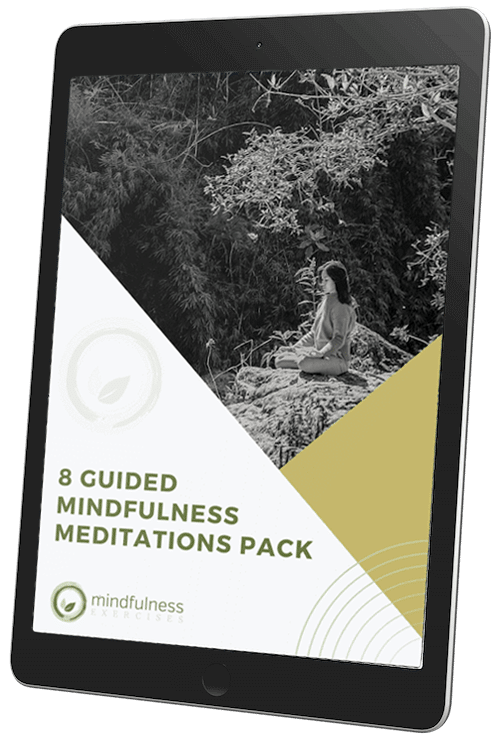Gratitude is not a trait naturally abundant in all human beings. In fact, studies say, there is one version of a gene called COMT that appears more prevalently in those that express more gratefulness. Those without this “thankful” version of COMT tend towards a negativity bias, causing an inclination towards complaining, as well as a propensity to ignore the good aspects of their life.
The good news is gratitude is not just a trait, it’s a practice.
Research shows that a strong gratitude practice improves your health, and increases optimism. It can also upgrade your relationship to yourself and others.
There are many ways to cultivate this wonderful habit of giving thanks. You can make a list of things you appreciate or say a little prayer for your family members, either way gratitude can increase the quality of your life. Join us today as we dive into the benefits and practice of gratitude meditation. You can also find links to gratitude scripts and guided meditations here on MindfulnessExercises.com.

Gratitude Guided Meditations
There is no “correct” way to do a gratefulness meditation, but there are many. Practicing guided meditation is a great way to learn how to cultivate feelings of gratitude. The best part is, all you have to do is listen!
Guided Gratitude Scripts
Perhaps you are the type of person that wants to be your own leader in meditation. Maybe you have previous experience in meditation. Either way, we have put together a list of our own Guided Gratitude Scripts that allow you to move through a grateful meditation at your own pace.
What is Gratitude Meditation?
Gratitude meditation is setting aside time to allow your mind to reflect on that which has benefited your life. It is a time during which you take an appreciative inventory of things, big or small, physical or immaterial. Maybe you feel grateful for a promotion or a travel opportunity. Perhaps you feel a sense of gratitude viewing the sunset from your living room, or for the smile of a kind stranger. There is no right or wrong object or sentiment upon which to award your thanks.
A grateful meditation is, simply put, a moment when you allow feelings of appreciation to well up in your heart and mind. Having a gratitude meditation practice does not mean you ignore life’s challenges. You do not suddenly become insensitive to the suffering in the world, seeing life through a lens of uniformed positivity. On the contrary, having a gratitude meditation practice can endow you with a greater perspective and resilience towards life’s setbacks.
How Gratitude Meditation Works
Meditation has been proven to make a positive impact on our brains.
Longitudinal studies have shown that meditation alone can increase the gray matter in areas associated with emotional regulation, memory, and the ability to comprehend a perspective other than our own. The gray matter in our brains is responsible for allowing us to process information for optimal human functioning.
As if the ability to regulate our emotions, understand others better, and recall information isn’t enough, let’s add gratitude to the mix. One study measured the brain activity of those who were participating in gratitude oriented tasks. They found that areas of the brain associated with “social and affective processes” correlated with the participants’ feelings of gratitude. These are areas that are involved in relationships and empathy.
Gratitude meditation can rewire our brains for increased emotional resilience, compassion for others, and perceived memory.
Benefits of Gratitude Meditation
Improved Outlook on Life
If you find yourself focused on the difficult aspects of your life, you’re not alone. It’s refreshing to know that we can train ourselves to focus more on the positive. Psychologists, Dr. Robert A. Emmons and Dr. Michael E. McCullough performed a study where they asked participants to write the good things that happened in their life every day, while another group was asked to write the bad things. After 10 weeks, the group who wrote good things reported an increased tendency towards optimism!
Deeper Relationships
Studies state that focusing on the good aspects of your partner with a thankful attitude increases your bond with that person. Findings by Gordon, A. M., Impett, E. A., Kogan, A., Oveis, C., & Keltner, D show that partners who practice being grateful for one another were discovered to be more responsive to their partners needs. Researchers also reported that these couples are also more committed to their partners. Gratitude seems to be quite the love potion, and we can certainly apply this practice in relation to our friends and family members as well.
Improved Physical Health
Robert Emmons, psychologist and leading expert in the science of gratitude, discovered that the health benefits of gratitude contain multitudes. According to his research, gratitude lowers blood pressure, decreases the factors associated with heart disease, and promotes better immune function. He found that participants who practice gratitude increase their likelihood of partaking in healthy and beneficial bodily activities, including eating well and exercising. You have to wonder…What can’t gratitude do?
Better Sleep
Forget counting sheep, count your blessings instead. The Journal of Psychosomatic Research performed a study asking patients with neuromuscular disorders to list three things they were grateful for during the course of 21 nights. At the end of the study, participants reported longer hours of sleep and a more refreshed feeling upon waking. Researchers state that pre-sleep conditions, also known as your mental state before falling asleep, were positively affected by the gratitude list.
Improved Mental Health
Mental health is an increasingly studied subject, thankfully, and gratitude is finding its way into that research! Research from a survey conducted by Self and Identity, found that participants who were more grateful treated themselves with less self-criticism and self-hate. They were more likely to engage in the compassionate and supportive behaviors that are found to mediate and reduce symptoms of depression.
How to Practice Gratitude Meditation
You might be saying to yourself “That’s all awesome, now what do I do?”. This is the part where we give you a little template on one of the many ways to practice gratitude meditation.
1) Find a comfortable, quiet place. It is important that you choose a place where you feel free and safe to express and relax yourself.
2) Take a comfortable position. Feel free to sit or lie down. Relax your hands by your sides.
3) Set aside a specific amount of time for this gratefulness meditation. Whether it’s 2 minutes or 1 hour, set aside a definitive time. It is suggested you set an alarm so you don’t have to mentally manage the time.
4) Briefly scan your body for areas of tension. Let go of any muscle tension to the best of your ability and try to feel into the sensation of relaxation.
5) Bring to mind something for which you are grateful. Perhaps it’s a pet, a family member, a partner, a landscape, or an event.
6) Bring your awareness into your heart. Become sharply aware of the feeling of the gratitude associated with this image. Now see if you can bring your awareness to your heart.
7) Imagine a soft, glowing light in the area of your heart. Imagine a warm light emanating from your heart. Allow the associated feeling to expand to your entire body.
8) Take a few deep breaths. Inhale, breathe in this light of gratitude into the entire body. Exhale, share this feeling with the world.
9) Put your hands together in front of your chest and thank yourself. When closing this meditation, take a moment to put your hands together in thanks. Take a moment to turn this gratitude in towards yourself.
Tips for Practicing Gratitude
There are many beautiful things about having a gratitude practice. Besides being good for your body, heart, and mind, it is a completely flexible activity! Meditation is one good way to fill your heart with thanks, but there are also many others.
1) Keep a gratitude journal. Write down at least 3 things you are thankful for everyday.
2) Write gratitude letters. Take some time to write letters of gratitude to those you love. Let them know you see their good qualities and how they have impacted your life.
3) Memorize gratitude affirmations. Choose some affirmations that speak to you and try to recite them until you have memorized them.
4) Thank someone new every day. Whether you’re grabbing a coffee, making a call to your bank, or having your groceries scanned at the store, take the time to give a heartfelt thanks to the person involved in this interaction.
5) Tell someone how much you appreciate them. Colleague, friend, child, or spouse, tell this person how much you value their presence in your life.
6) Appreciate nature. From the beach to the city you can always find nature. Take the time to savor its beauty.
7) Give thanks before a meal. You do not have to be religious to appreciate all the effort that went into the plate in front of you. Take a moment to send goodwill and appreciation to the farmers, the harvesters, the chef, the rainwater, the sun, or anything else involved in your meal.
8) Notice the details. Take note of any object that catches your eye. Notice the size, the shape, the colors, the way the light moves. Take the time to value the uniqueness of this particular object.
9) Make a list of your strengths. Don’t be shy now! Write down at least 7 things that you admire, or are learning to admire, about yourself.
Gratitude Meditation FAQs
Who should practice gratitude meditation?
The results are in…and gratitude is for everyone! Throughout this article we have talked about the benefits of gratitude for our mental and physical ills, for children, for lovers, and for those who struggle with sleep. Studies say that gratitude can enhance our overall well-being and general happiness with consistent practice.
When is the best time for gratitude meditation?
The best time of day for gratitude meditation is right before falling asleep or upon waking up.
Besides, it seems that practicing at nighttime sets the tone for both a peaceful night, and a brighter outlook for the next day. Those who were grateful before bedtime not only improved the quality of their sleep, they also woke up happier.
Does gratitude meditation work for kids?
Yes, gratitude meditation is a wonderful tool for kids. The Journal of Positive Psychology conducted a study following two groups of adolescents, those that are low or high in positive affect (their overall well-being). These 89 kids were asked to write a letter of gratitude to a loved one. Research showed that those with a high positive affect had fewer changes, but the youth with a lower positive affect reported a significant improvement in their happiness and well-being!
Why doesn't gratitude meditation work for me?
Chances are you are now allowing the feeling of gratitude enough time to come to fruition. Start by choosing a person, place or thing, that you feel gratitude for, and check in with the feeling in your heart. Sit with that feeling until you become familiar with it.
Will practicing gratitude help you manifest your goals?
Yes! A strong gratitude practice helps you pay more attention to new opportunities. Your practice will train you to focus on what you want instead of what you don’t want.







